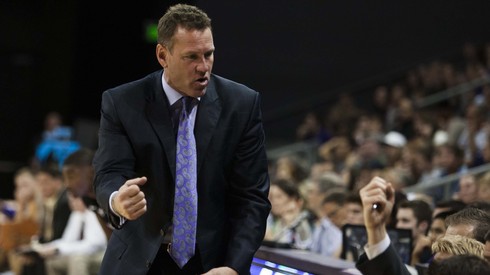RTC NBA Draft Profiles: Kyle Anderson
Posted by Bennet Hayes on May 29th, 2014The NBA Draft is scheduled for Thursday, June 26, in Brooklyn. As we have done for the last several years, RTC will provide comprehensive breakdowns of 20 collegians likely to hear their names called by Adam Silver at some point in the draft’s first round. We’ll start with prospects currently slated for the back half of the opening round, but as June progresses we will slowly work our way up and through the presumptive lottery selections. RTC National Columnist Bennet Hayes is tackling this series; you can find him on Twitter @HoopsTraveler.
Player Name: Kyle Anderson
School: UCLA
Height/Weight: 6’9”/230 lbs.
NBA Position: Point Guard/Small Forward
Projected Draft Range: Mid to Late First Round
Overview: UCLA may be losing one of the most unique talents to grace the college hardwoods this millennium, but the Bruins’ loss is the 2014 NBA Draft’s gain, as Kyle Anderson has simultaneously become one of the most intriguing and confounding prospects of this or any draft. Long and rangy 6’9″ point guards don’t grow on trees, particularly ones who led their teams to the Sweet Sixteen and posted per game averages of 14.6 points, 8.8 rebounds, and 6.5 assists last season. Along the way, Anderson became the first Pac-12 player to compile 200 assists and 200 rebounds in a season — just one of many statistical firsts that this freakishly versatile sophomore recorded in 2013-14. New head man Steve Alford’s decision to let Anderson run his team’s point — he wasn’t offered that opportunity during a statistically pedestrian freshman season — paid almost immediate dividends, as Anderson fueled an up-tempo Bruins offense that quickly staked its claim among the nation’s best (they finished 13th nationally in offensive efficiency). A pair of potential first-rounders in this year’s draft (Zach LaVine and Jordan Adams), among others, joined Anderson in breaking the chains off the stagnancy of the Ben Howland era, but no player deserves more credit for that than Anderson. Aside from an unusually high turnover rate (20.2%) and occasionally soft one-on-one defense, Anderson offered positive contributions in nearly every area on the floor. He shot 48 percent from both two and three-point ranges, 73 percent from the line, and chipped in defensively with a combined 2.6 blocks and steals per contest. Below average athleticism (they call him “Slo-Mo” for a reason) and an uncertain role at the next level has the former UCLA guard grading out as a late first-rounder right now, but Kyle Anderson is as distinctive an NBA prospect as you will ever encounter.














































